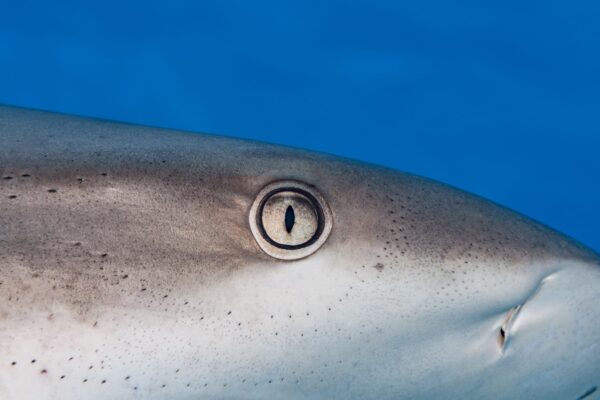The Convention on International Trade in Endangered Species of Wild Fauna and Flora, or CITES, a multilateral agreement, currently lists nearly 70 elasmobranch fish species in its three appendices. These include manta rays (Mobula spp.), mako sharks (Isurusspp.) and sawfishes (family Pristidae). CITES is a United Nations agreement that is binding in 184 countries and limits the international trade of identified animals at risk, including sharks.
Now, CITES member states want to list 19 requiem sharks, from the family Carcharhinidae, several hammerhead sharks (family Sphyrnidae) and 37 guitarfishes (family Rhinobatidae) on CITES Appendix II. Many of the species being proposed are considered endangered or critically endangered on the IUCN Red List. The next CITES meeting, known as the 19th Conference of the Parties, or COP19, begun in Panama on November 14 2022.
(photo: Hannes Klostermann/WCS)
Panama leadership
There are currently 46 marine species and 23 freshwater species protected under CITES. This year, the governments in attendance are voting on the protection of over 50 species of sharks, from grey reef sharks to lemon sharks. Two-thirds of the government delegates at CITES need to vote ‘yes’ for these species to be placed on the CITES protectee list, which will put restrictions on international trade for fins, meat, and any other shark products.
Panama is leading an effort, co-sponsored by more than 40 other CITES Party governments, to list all requiem sharks on CITES Appendix II, and co-sponsoring another family-level listing proposal from the European Union for the small-bodied hammerhead sharks at CoP19. This Appendix II proposal would bring the majority of the shark fin trade under CITES Appendix II regulation, which helps ensure that trade is sustainable and legal.
What is Appendix II?
CITES works by listing species of wild plant and animal on one of three appendices. Appendix II is intended for species which may not be currently threatened with extinction, but could become so if trade is not regulated. In practice, Appendix II includes many highly endangered species.
Shark and ray species close to extinction
Approximately 37% of all sharks (and closely related rays), and 70% of species traded for their fins already at risk of extinction. Sharks and rays are the second most threatened vertebrate group on the planet after amphibians. Many requiem sharks are key predators on the world’s coral reefs, but recent global surveys indicate that reef sharks are functionally extinct on 20% of reefs, further jeopardizing the health of these ecosystems that are already devastated by the impact of climate change.
What else?: totoaba, sea cucumber, turtles and seahorses
The European Union, Seychelles and US have proposed the inclusion of three species of sea cucumber in CITES Appendix II. Sea cucumbers received CITES protections for the first time at CoP18 in 2019, when three species of the genus Holothuria were added to Appendix II. The listing did not receive universal support – Japan subsequently entered a reservation for one of the species, which means the country refuses to implement the listing.
There are also recommendations to increase protection for totoaba – Illegal fishing for the totoaba has led to the near extinction of the vaquita, the world’s smallest porpoise – as well as improved protection for turtles and seahorses.
Resources and further reading:
This text was created via extracts from Wildlife Conservation Society, PADI, Hakai, IFAW, Mongabay, Save our Seas and China Dialogue.
The CITES COP19 meeting takes place from November 14-25 in Panama and further information on the discussions can be found here.
